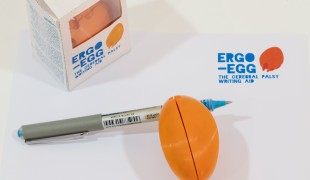- 5781
- 343
- 9
- 6
- 0
- Help Ukraine
About the solution
Fatima al Kaabi from the United Arabic Emirates, at only 16-year-old, started developing a robot to help sick kids attend classes in school.
The idea of the robot came from a joke. “I missed school to attend different events several years ago, and I remember staying back with my teacher after school who joked about me inventing “all the inventions in the world” but not inventing a robot that goes to school instead of me,” Al Kaabi said.
“It is a robot that attends physically for students who are unable to do so, and it’s targeted specifically for kids with cancer who spend long periods of time in hospitals in their home countries or outside,” Al Kaabi said.
Al Kaabi is using a similar robot with fewer features at her school to help her in the development. “With the help of the school, I was able to bring one (robot) and use it in our school towards developing the prototype I’m working on. We are still working on a mechanism that enables students who are injured or sick to use the one we have currently,” she explained.
The aim of this project is to include sick children, who are missing their classes and the social aspect of attending school. An absent student using the robot would be able to control it around the school through a website. The robot includes a screen projecting the student’s face, along with sensors to prevent it from falling off the stairs or bumping into people in the hallway.
Adapted from: https://gulfnews.com/going-out/society/emirati-student-developing-robots...
This solution shall not include mention to the use of drugs, chemicals or biologicals (including food); invasive devices; offensive, commercial or inherently dangerous content. This solution was not medically validated. Proceed with caution! If you have any doubts, please consult with a health professional.
DISCLAIMER: This story was written by someone who is not the author of the solution, therefore please be advised that, although it was written with the utmost respect for the innovation and the innovator, there can be some incorrect statements. If you find any errors please contact the patient Innovation team via info@patient-innovation.com
-
-
623
-
0
-
9173

Father creates app to help his daughter to read
-
-
-
315
-
0
-
3905

Girl builds device to help people with cerebral palsy communicate
Grip
COMMUNICATION: Communicating, whether by speaking, listening, or other means
Writing (letters, songs, peoms)
Cerebral Palsy
Educational/Leisure device (book, toy, game...)
Strategy/Tip
Difficulty coordinating movements
Stiffness or rigidity (difficulty moving)
Muscle weakness
Loss of balance
Difficulty speaking or understanding speech
Trouble with fine motor skills (e.g., writing, buttoning clothes)
Cognitive impairment
Building Supportive Community Relationships
Promoting inclusivity and social integration
Improving Speech and Communication
Neurology
Pediatrics
Jordan
-
-
-
276
-
0
-
2919

Ukrainian war refugee couple, one of them a cancer patient, creates an app- AdvIsory.Doctor- for refugees to securely store, interpret, and share medical records.
CAREGIVING
COMMUNICATION: Communicating, whether by speaking, listening, or other means
Traveling
Cancer
Website
App (Including when connected with wearable)
AI algorithm
Enhancing health literacy
Promoting self-management
Manage Medication
Building Supportive Community Relationships
Promoting inclusivity and social integration
To improve Treatment/Therapy
Preventing (Vaccination, Protection, Falls, Research/Mapping)
Raise awareness
Caregiving Support
General and Family Medicine
Medical Oncology
Germany
-
 en
en